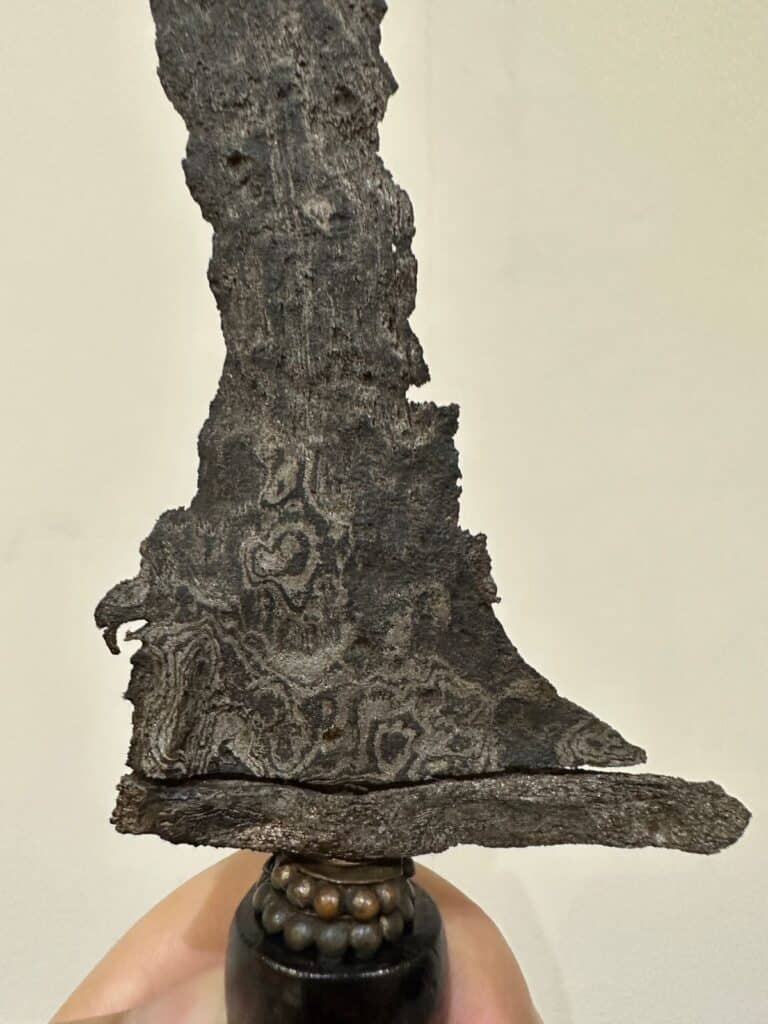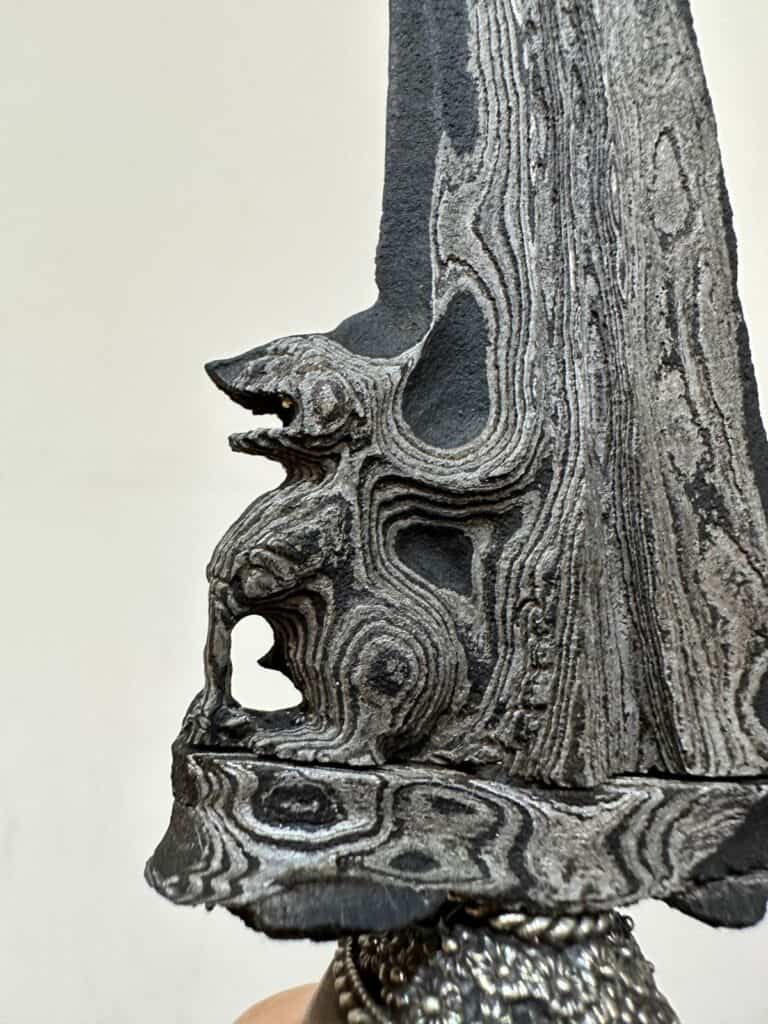Fakes and Frauds in the Keris Markets
The Keris is a thing of beauty, offering spiritual energy together with beautiful craftsmanship. With many different styles and blades across many different eras, Keris range wildly in style, shape and appearance.
This diversity is part of their appeal; with each blade made individually and by a specialist metalsmith, there’s no such thing as a universal design. However its greatest strength is also its weakness; the differences in the look of the Keris mean it can be much easier to sell a fake.
The internet has made it possible to make purchases which would have otherwise been out of reach but if you’re not travelling to Indonesia, how can you tell whether a Keris is real?
Here’s a closer look at the genuine Keris blades and how to avoid being scammed by a fake.
Inconsistencies in Materials
In the world of antiques, one of the tell-tale signs that an item isn’t the real deal is a lack of consistency in the materials used.
For example, if an antique purports to date back to the 11th century but uses materials which weren’t available in the region until the 15th century, alarm bells should be ringing. Or should they?
To complicate matters further, it is very common to find Keris with materials which come from different eras, and also different regions. This means that even if the composition is not uniform it doesn’t mean that it’s a fake.
This may sound doubtful but there’s a very good reason for this. Keris were so highly prized that they were handed down through the bloodline, typically from father to son. Although they were known for their spiritual qualities, they were also used in combat. Warriors typically had three different Keris and used one for stabbing and another for parrying. The blade used for parrying would be subjected to immense force and damage wouldn’t be uncommon. On many occasions, the parrying Keris may be severely broken or damaged.
However, regardless of how badly broken the Keris was, discarding is was out of the question. Each Keris houses a jinn, and simply throwing the blade away would be extremely bad luck. Every Keris would have been repaired slowly and painstakingly. Like a shattered vase that’s been glued back together, it’s possible to see the cracks if you look closely – and that means different materials used in parts.
The reason for this is that historically it wasn’t always possible to get hold of the same materials. Rather than leaving the Keris broken, the blades were repaired using whatever suitable materials could be found. This could include shipping materials in from other regions, creating a confusing hotchpotch of cultural authenticity.
In many ways, having a Keris made from different materials could be a sign that it’s genuine – but not always!
Age of the Keris
The Keris is known as an ancient type of sword which originates from Indonesia, so when looking for a blade to buy it makes sense to search for an older artefact.
There are many Keris which are centuries old, but new items can be artificially aged to appear much older. It’s therefore not as easy to just look for one which appears to be an antique.
Keris are still made today in Indonesia, and they remain an important part of local culture. However, due to their immense popularity, there are many Keris being sold which have been mass produced.
If you want a blade which imitates the Keris style and nods to the tradition and cultures, a mass-produced item may be fine but it’s vital to understand these are not authentic Keris.
It is possible to buy a brand new Keris but you’ll need to be certain of the source you are purchasing from. There are lots of manufacturers that are targeted towards tourists, creating Keris which look real but are simple reproductions. To buy a genuine Keris you will need to find an experienced empu and be prepared to wait for them to craft the blade. Modern techniques mean that this is much faster than in the past, but typically could still take a couple of weeks.
What all this means is that it’s impossible to tell whether a Keris is legitimate based on its appearance. You may get brand new Keris which are genuine, and Keris which appear to be antique which are just reproductions. And the reverse is true too; there are many ancient Keris which are absolutely authentic, and new Keris which are factory-produced replicas.
Unless you know the source or have the item verified by an expert, it’s impossible to be certain if you’re looking at a Keris or just a copycat item.
Obtaining Verification
It’s now easier than ever to buy items online which means that cultural artefacts such as Keris can be purchased without having to trek to Indonesia first. This makes it much more convenient, but also opens the doors for more fakes and frauds, especially if you’re purchasing without seeing the goods in real life first.
It’s therefore advisable to stick to sellers that you can trust, and to always look for evidence of authenticity. Of course, any seller can issue their own certificate to verify that their items are genuine, so these certificates should be from an independent third party who is an expert in Keris.
As part of the verification process, the history of the Keris should be comprehensively checked. Certain characteristics of the Keris will enable experts to verify whether claims are true, and also to be able to age it accurately.
Having a history of the Keris is an integral part of owning one because of course, it’s not just a decorative blade. The spiritual power of the Keris means that its owner must understand about the jinn that lies within, and what’s needed to feed it. Proper authentication allows you to be provided with information about its specific magical powers and how this particular Keris should be used.
Auction and second hand sites won’t be able to provide this information so you will be risking buying a counterfeit item. Unless you are buying in Indonesia directly from an empu, don’t risk purchasing a Keris online without an independent certificate of proof.







